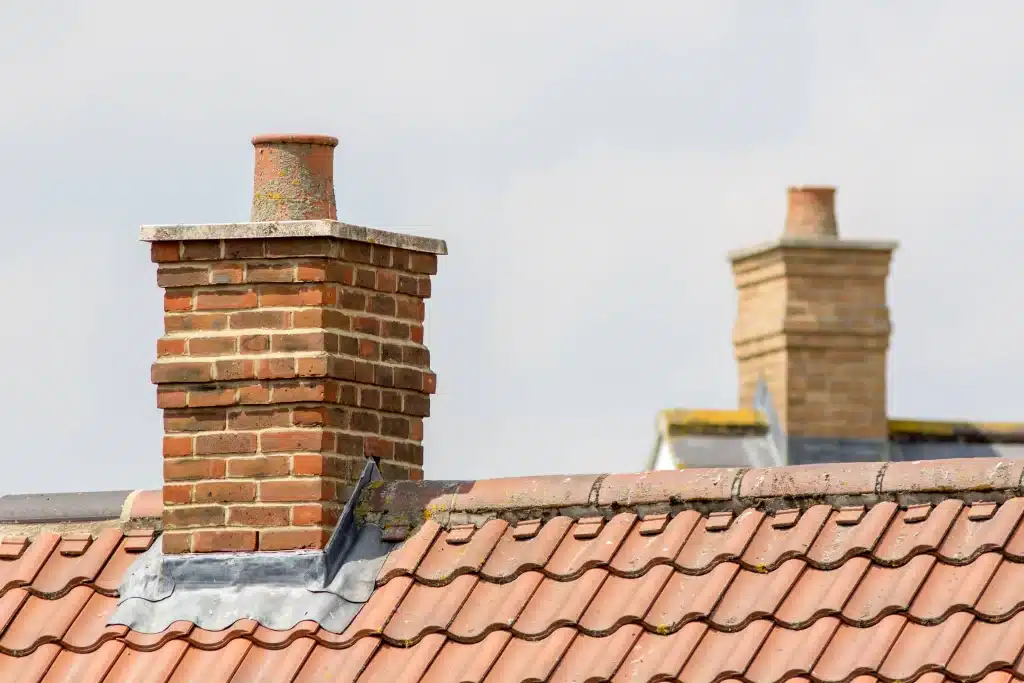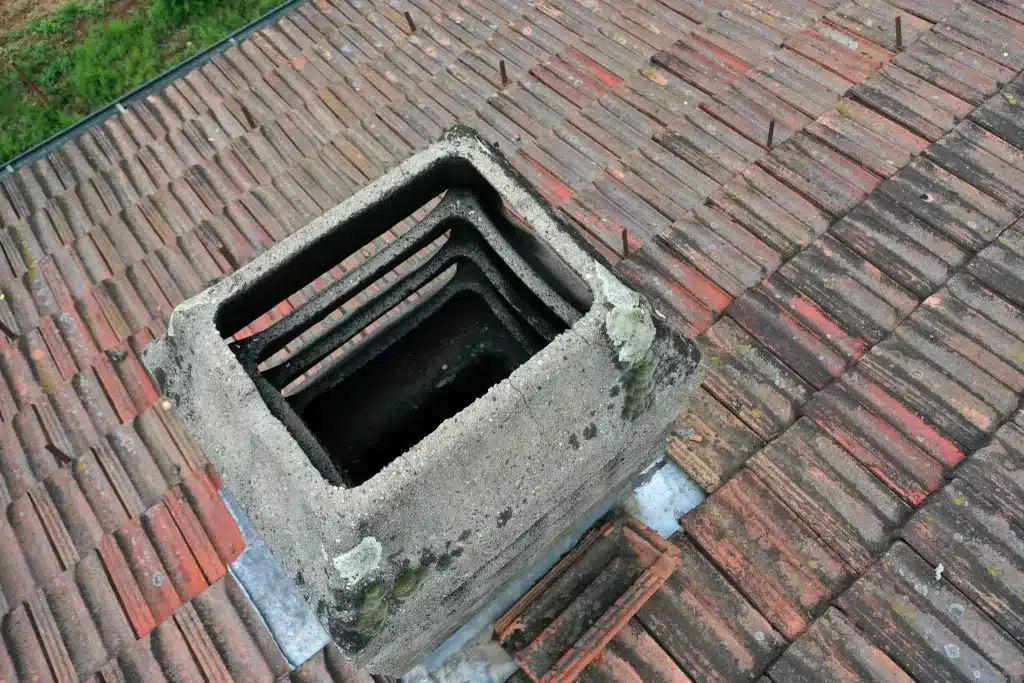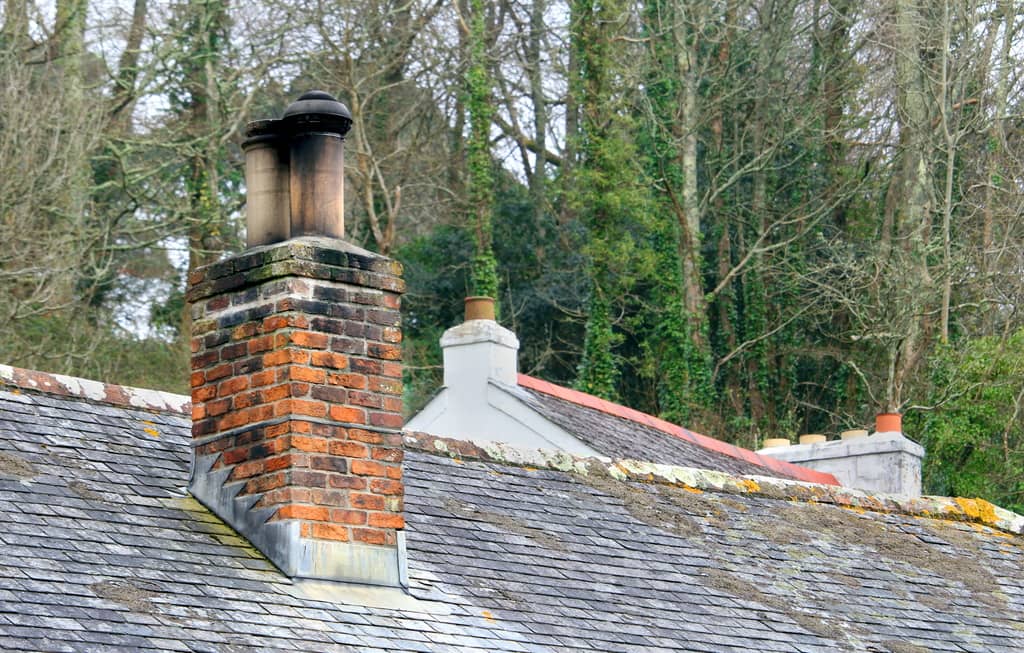Owning a home with an amenity like a fireplace can be exciting. However, having a fireplace with a chimney might end up requiring you to conduct more maintenance. Getting to know everything about your chimney is a great step for ensuring that it stays functional. If anything within or around the chimney becomes damaged, you could experience major damage to the roof or even worse, a house fire. One of those parts of the chimney that needs to stay intact is the chimney flashing. What is chimney flashing? It secures and seals the chimney to the roof of your home. It keeps water from between the roof and the chimney.
Let’s take a look below at some more chimney-flashing facts.
What Are The Parts Of Chimney Flashing?
Believe it or not, there are three different parts to a chimney flashing. You have step flashing, counter or cap flashing, and then base flashing. The purpose of chimney flashing to is waterproof your chimney and the roof surrounding it. This sealing keeps water from getting into the chimney or roof and causing major damage. Let’s take a look at each flashing.
- Step flashing – This is an L-shaped metal piece that is placed under the shingles on your roof and butts up against the brick of your chimney.
- Counter or cap flashing – This is also an L-shaped metal piece that is made to cover the step flashing. It is then affixed into a groove that is cut out of the brickwork of the chimney.
- Base flashing – This is used between the vertical surface and roofing surface joint. Basically, the base of the chimney. Also, it is the main part that protects against water penetration.
Each flashing is installed and caulked to create a waterproof seal. If you end up with roof damage the flashings could fail and water could enter your attic space and home and create major damage. Also, keep in mind that the chimney should be inspected yearly as it too could sustain damage over time. The mortar used for the brick installation could have settled or gotten old and cracked causing a shifting of the chimney. This would loosen the seal created by the flashing.

How Do I Know My Flashing Needs Replacing?
Replacing your chimney flashing will likely occur after about 30 years. Most lifespans of chimney flashing are determined by the shape, and size of the chimney, as well as what materials were used. Additionally, the year your home was built can determine the lifespan. Let’s take a look below at some reasons to replace your flashing.
- Gaps in the caulking that seals the chimney and the roof
- Rust stains that are apparent to a breakdown of the material
- Hearing or seeing water drops or puddles building up
- Discoloration of the bricks on the chimney
- Obvious leaking from the inside or outside of the chimney area
- Water stains on the ceiling and walls that surround the chimney
Other Recommended Maintenace
Now that you are aware of what chimney flashing is, you can read up on how to clean a clogged chimney. You wouldn’t want your chimney clogged for very long as this could cause damage to your chimney and flashing.
Next, if you have a chimney fire, keep in mind that it cannot burn itself out. It needs to be put out by the fire department so you will need to call them quickly. Chimney fires can start from nests created by birds, raccoons, squirrels, or other rodents
Lastly, while you are on the roof tending to the chimney, take a look around. Does it look like your roof has some issues? Well, the 15-year-old roof should be covered by insurance if the damage is done by hail or other extreme weather.

When Do I Call A Professional?
When dealing with a chimney it is important to call on a professional that understands the inner workings of a chimney. There are a lot of parts and pieces that make a chimney safe for your home. If those parts are damaged or not properly maintained, you could risk experiencing a chimney fire. Although amenities in homes are great, it is important to use your local home inspection team to determine the functionality of your chimney each year. Getting your chimney structure inspected yearly is a great idea.
Conclusion
Chimneys and fireplaces must be properly constructed and maintained. Consequently, failure to maintain a chimney and fireplace could end up causing major damage to your home. Reach out to your local home inspection team to ensure that everything is working properly. Call on Edifice Inspections in Peachtree Corners, GA for a full home inspection and chimney inspection.


118 Comments
Comments are closed.